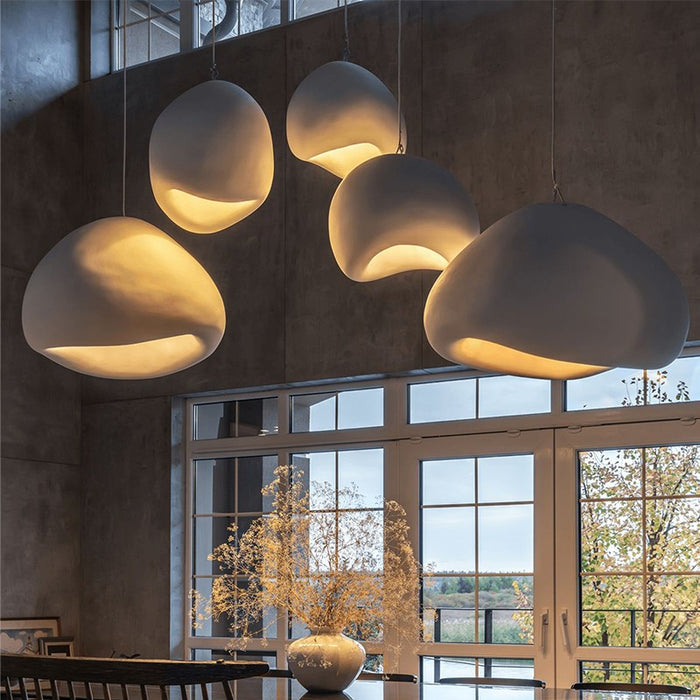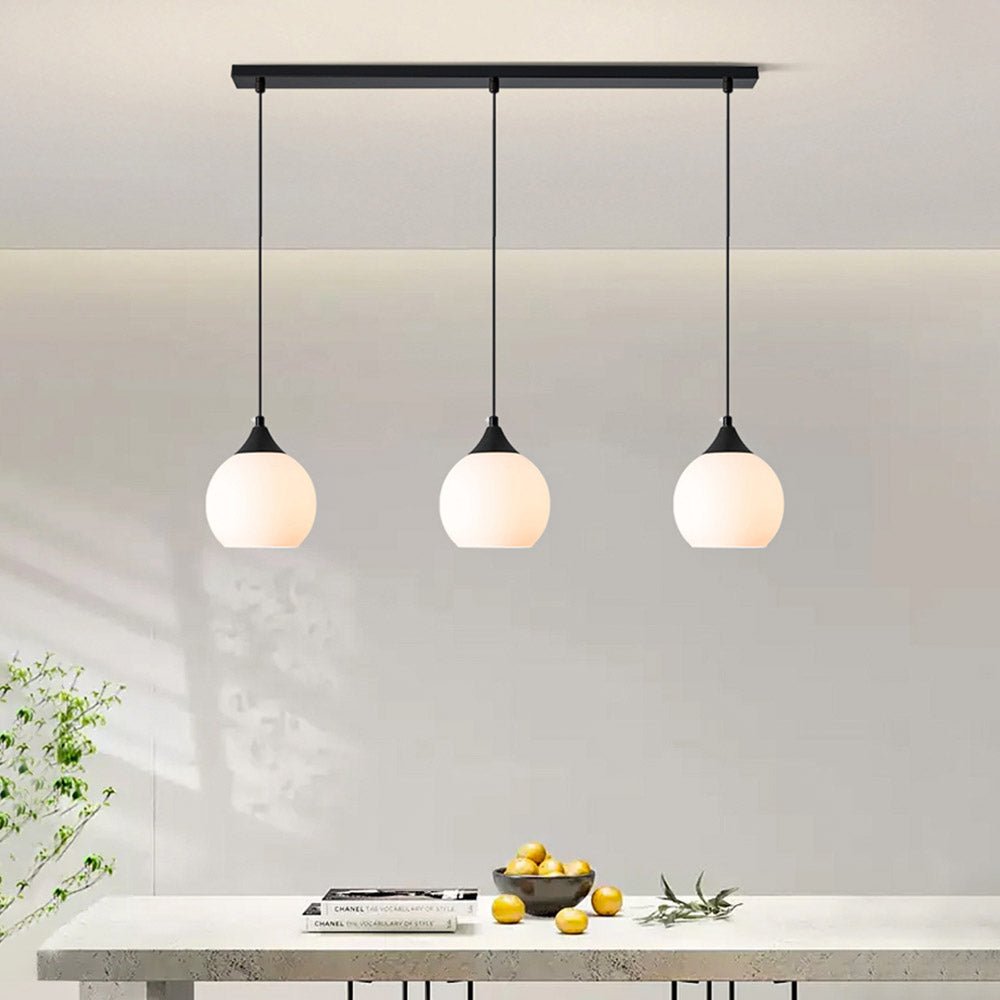Pendant Light Placement Tips for Balanced Illumination
How to Select the Perfect Pendant Light to Improve Your Interior Decoration
Choosing the perfect Pendant light requires careful factor to consider of numerous components. The design must align with the overall decoration, while size plays an important role in ensuring correct proportion. Shade and coating alternatives can enhance aesthetic allure. In addition, evaluating light output is essential for functionality - Pendant Light. Comprehending these elements can change a room, producing an inviting ambience. The procedure involves more than just looks; there are functionalities that need to also be resolved.
Comprehending Various Pendant Light Styles
Pendant lights can be found in a variety of designs, each offering unique aesthetic and functional advantages. From commercial layouts that include exposed light bulbs and metal surfaces to classy glass components that stimulate a feeling of elegance, the choices are large. Contemporary Pendant lights frequently emphasize minimal shapes and tidy lines, while vintage-inspired designs might include elaborate describing and cozy tones.
For those seeking a rustic charm, fixtures made from natural products like timber or rattan offer a comfortable feeling. In addition, multi-light necklaces can offer as declaration items, integrating a number of light bulbs in a single layout for remarkable result.
Each design contributes differently to a room, affecting the total atmosphere and character. Comprehending these diverse Pendant light designs enables homeowners and designers to make enlightened selections that align with their interior design vision, enhancing both capability and visual charm in their atmospheres.
Determining the Right Size for Your Space
When selecting a pendant light, accurately determining the ceiling elevation is essential for accomplishing the appropriate balance in an area. In addition, computing the scale of the component in regard to the surrounding space assurances that the light complements rather than bewilders the style. These variables play a crucial function in developing an unified indoor atmosphere.
Action Ceiling Elevation
To attain a visually pleasing layout, determining ceiling elevation is essential for selecting the suitable dimension of Pendant light. The elevation of the ceiling straight affects the range and percentage of the lights fixture. In rooms with basic eight-foot ceilings, Pendant lights need to commonly spend time 30 to 36 inches above the surface area below, such as a dining table or cooking area island. For greater ceilings, modifications should be made appropriately, as a greater setup can create a more significant impact. When figuring out the optimal elevation, it is essential to mirror on the overall area dimensions and format. Precise measurements assist assure that the Pendant light not just complements the room's layout but likewise supplies ample lighting without overwhelming the space.
Determine Component Scale
Selecting the right dimension for a lighting component is crucial for developing consistency in a room's design. To compute fixture range, one should take into consideration the measurements of the area. An usual guideline involves adding the room's length and width in feet, which gives an ideal diameter in inches for a necklace light. A room determining 10 feet by 12 feet suggests a component size of about 22 inches. Additionally, the height of the ceiling plays a critical function; taller ceilings might accommodate bigger fixtures. Making sure the Pendant hangs at a proper height-- typically 30 to 36 inches above surface areas-- more enhances performance and aesthetic appeal. Appropriately scaled components can transform a room, making it feel inviting and well-coordinated.
Taking Into Consideration Shade and Finish Options
When choosing a necklace light, the interplay of shade and surface can considerably affect the overall aesthetic of a room. Coordinating the light's color palette with existing decor ensures an unified style, while the option of coating product can boost structure and style. Thoughtful factor to consider of these components is vital for attaining a natural search in interior layout.
Color Combination Coordination
Shade scheme control plays a crucial duty in attaining an unified indoor style, especially when picking pendant lights. Picking a necklace light that enhances the existing color pattern boosts the general visual. For instance, a light with cozy tones can develop a cozy ambience in a space filled up with earthy colors, while cooler tones might harmonize effectively with a contemporary, minimalist scheme. It is important to think about the dominant colors in the area, ensuring that the Pendant light either blends effortlessly or see this gives a striking contrast. Additionally, incorporating accent colors from the combination can tie the style together, developing a natural appearance. Eventually, thoughtful shade coordination elevates the visual impact of the Pendant light within the interior decoration system.
Complete Material Considerations

The choice of finish materials for Pendant lights considerably influences the total design visual of a room. Different surfaces, such as matte, glossy, or distinctive, can develop varying aesthetic impacts. As an example, a refined steel coating may evoke a contemporary, industrial ambience, while a matte or brushed surface can provide a softer, more natural feeling. Shade choices, varying from traditional blacks and whites to lively tones, additionally play an important duty in balancing with existing decoration. Additionally, materials such as glass, timber, or ceramic can improve the Pendant's personality and enhance surrounding components. Inevitably, choosing the best surface material assures the Pendant light not only lights up but also improves the space's layout story.
Examining Light Output and Performance
Light outcome and capability are basic aspects in selecting the suitable Pendant light for any kind of area. Reviewing the brightness of a pendant light entails comprehending lumens, which gauge the overall light emitted. A greater lumen count generally suggests a brighter light, essential for tasks such as reading or food preparation. Furthermore, the color temperature level, gauged in Kelvin, affects the atmosphere; warmer tones create a comfortable ambience, while cooler tones advertise alertness.
Performance expands beyond illumination to consist of the fixture's layout and placement. Adjustable pendants can provide functional lights for different tasks, while dealt with options include a declaration to the decor. Moreover, considering the height at which the Pendant will hang is important, Get More Info as it influences both light distribution and security. Inevitably, a well-assessed light output and functionality will certainly guarantee that the chosen Pendant light fulfills both visual and sensible requirements in the desired space.
Matching Pendant Lights With Your Interior Decoration Theme
Just how can one guarantee that Pendant lights boost the general interior style motif of an area? The essential depend on selecting components that reverberate with the established visual. For example, in a minimalist setting, basic and streamlined designs in neutral shades can create a natural appearance. Alternatively, a vintage-themed room may benefit from luxuriant Pendant lights, featuring elaborate styles or warm tones that evoke fond memories.
Furthermore, taking into consideration the product and surface of the Pendant light is necessary. Metals like brass or copper can add a touch of elegance to a modern space, while timber elements may complement rustic insides.
Color consistency also plays a considerable role; choosing tones that align with the area's palette assurances that the lights feels integrated instead than misplaced. Eventually, the best Pendant lights need to not just brighten yet also act as a stylistic extension of the general layout, enhancing the ambiance and character of the room.
Installment and Placement Tips for Optimum Impact

In bigger spaces, consider using larger clusters or necklaces to avoid them from feeling lost in the space. For an open-concept layout, lining up the pendants with various other design components, like countertops or furnishings lines, cultivates cohesion. Additionally, dimmer buttons can boost versatility, permitting for flexible setting. Inevitably, thoughtful installation and placement of Pendant lights can change the looks and performance of any interior decoration.
Often Asked Concerns
What Are the most effective Materials for Pendant Lighting?
The very best materials for Pendant lights include glass for sophistication, steel for longevity, and textile for warmth. Each product provides one-of-a-kind looks, enabling developers to develop versatile lighting solutions that improve various indoor designs and ambiences.
Just how Do I Keep and Tidy Pendant Lights?
Maintaining and cleaning pendant lights involves normal dusting, making use of a moist towel for surfaces, and employing mild cleaners for glass parts. Regular look for loosened installations assure security and prolong the life-span of the components.

Can Pendant Lights Be Dimmable?
The inquiry of whether Pendant lights can be dimmable is appropriate for many. Different models supply dimmable attributes, enabling individuals to readjust brightness, enhancing ambiance and performance. Compatibility with dimmer buttons is essential for peak performance.
What Is the Life-span of Regular Pendant Light Bulbs?
The lifespan of typical Pendant light bulbs varies significantly. Incandescent bulbs last about 1,000 hours, while small fluorescent lights (CFLs) can last 7,000 to 15,000 hours. LED bulbs provide the lengthiest life expectancy, rising to 25,000 hours or even more.
Are Pendant Lighting Suitable for Outdoor Use?
Pendant lights can be appropriate for exterior use, yet they have to be specifically designed for such environments. Weather-resistant products and appropriate setup are vital to ensure resilience and safety and security against aspects like moisture and wind.
Shade scheme sychronisation plays a crucial duty in attaining an unified indoor style, specifically when selecting pendant lights. The option of coating materials for Pendant lights substantially influences the total style aesthetic of a space. Light outcome and capability are essential elements in picking the optimal Pendant light for any kind of area. Reviewing the illumination of a necklace light entails understanding lumens, which determine the overall light produced (Pendant Light). How can one assure that Pendant lights enhance the general indoor layout motif of a space?